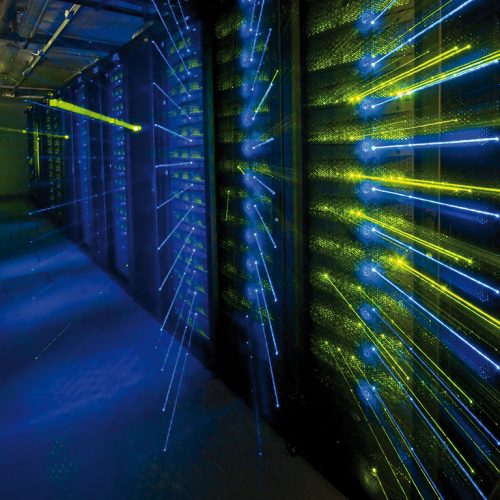Detecting gravitational waves is a complex undertaking; the gravitational interaction is, in fact, the weakest in the universe. Current gravitational detectors have required cutting-edge, new and often innovative technological solutions. This will be even more true for the implementation of a pioneering project such as the Einstein Telescope. The technologies that will be designed and developed for the ET will need to improve detector performance by at least an order of magnitude over current, second-generation instruments to enable the ET to observe a volume of the universe a thousand times larger than we can observe today. This will be achieved by successfully overcoming a series of technological challenges that the scientific and business worlds will need to tackle together. This collaboration will foster, significant and sometimes unforeseen spillovers, both in industry and other sectors, for the benefit of society as a wholth. With the ET, a veritable chain of innovation will be created in many areas.
Innovation & Industries
A large infrastructure
The ET is an innovative research infrastructure, but it is also a major civil engineering infrastructure. One could mention for instance all the excavations, underground tunnels, underground experimental rooms, and surface laboratories. All these infrastructures will be built in a unique natural environment that must be protected and respected.
Environmental, spatial and energy sustainability aspects are the priority and represent an element of intrinsic value for the entire ET project, which will offer insights for development and replication in other regions.
Precision mechanics
The ET is a large precision experiment in which mechanics play a crucial role. For example, the ET’s seismic isolation system will be based on the experience acquired in the Virgo detector. It will be a mixed passive-active system in which the mechanical characteristics of components and active control capability will play a key role. The Einstein Telescope will multiply the mechanical component needs compared to Virgo, with an expected cost, for the suspension alone, of approximately 52 million euro.
Steel, vacuum systems and cryogenics
The ET will be the largest vacuum system in Europe. A large amount of steel and a series of technological innovations are needed to make the ET’s vacuum tubes. Low-noise, zero-contamination pumping systems will be implemented. Special cryogenic systems will be needed to bring the optics down to 10 degrees Kelvin without causing vibrational noise or contamination. The projected cost of these systems is several hundred millions of euro.
Optical components, photonics and thin films
In the triangular configuration, the Einstein Telescope will consist of six interferometers. These will implement both improved technologies, for example, fused silica optics, coatings with high reflectivity, low optical absorption and low thermo-mechanical dissipation, and completely new technologies, such as crystalline silica optics, crystalline coatings, and lasers at different wavelengths. It will be necessary to develop electro-optical sensors and actuators with very low optical losses, in order to implement quantum optics solutions. It will also be necessary to develop adaptive optics techniques to correct optical aberrations due to the large powers involved. Finally, it will be necessary to develop computer optical simulation techniques capable of reproducing and modelling the behaviours of these complex machines in detail. The demand for high-tech optical components will have a significant impact and the expected cost for the ET’s entire optical apparatus is approximately 157 million euros.
Electronics, photo-electronics, control systems and robotics
The Einstein Telescope will need data acquisition systems not only for the interferometers but also for controlling the entire 30-kilometre tunnel and surrounding areas. The data will need to be acquired from a wide variety of sensors, then processed by distributed intelligence, and result in commands sent to the appropriate actuators. It will be necessary to supply the entire control and automation chain, which will have specific needs, including power supply, processors, related analogue and digital electronics and printed circuit boards. In addition, the rapidly developing areas of optoelectronics and the Internet of Things will find a natural application in the ET infrastructure, with systems that will need to be programmed according to the newest software technologies. Control systems with specialised robots capable of manipulating the delicate instrument components will be essential. Robotics has only recently made its appearance in the world of gravitational wave detectors and the ET represents an opportunity for developing this new relationship.
Information and communication technology
Processing the data collected by the ET will require state-of-the-art computing systems. Real-time transmission of a sustained flow of data to computer centres located in Italy, Europe as well as other places worldwide is envisaged. Sardinia will be the starting and first management point for this large amount of data, partly thanks to the GARR network enhancement implemented in the framework of the Recovery Plan funded TeRABIT project. Italy will thus be the first port of call in Europe, contributing to its processing as well as its transmission. National research institutes and universities are working on developing innovative solutions dedicated to high-performance scientific computing. This work is the continuation of a long tradition of major computing research centres in Italy, such as the Leonardo supercomputer and the newly established ICSC Research Centre in High Performance Computing, Big Data and Quantum Computing in Bologna, funded as part of the National Resilience and Recovery Plan. The presence of a culture of innovation in computing, fuelled by the needs of the ET, constitutes an advantage for companies that will be able to have the most advanced solutions proven by the most demanding users. Such needs may also create a satellite industry with high-tech content, which can also contribute to innovation in industries in more traditional areas.
Banner image: One of Virgo’s mirrors. Credits: INFN-EGO




